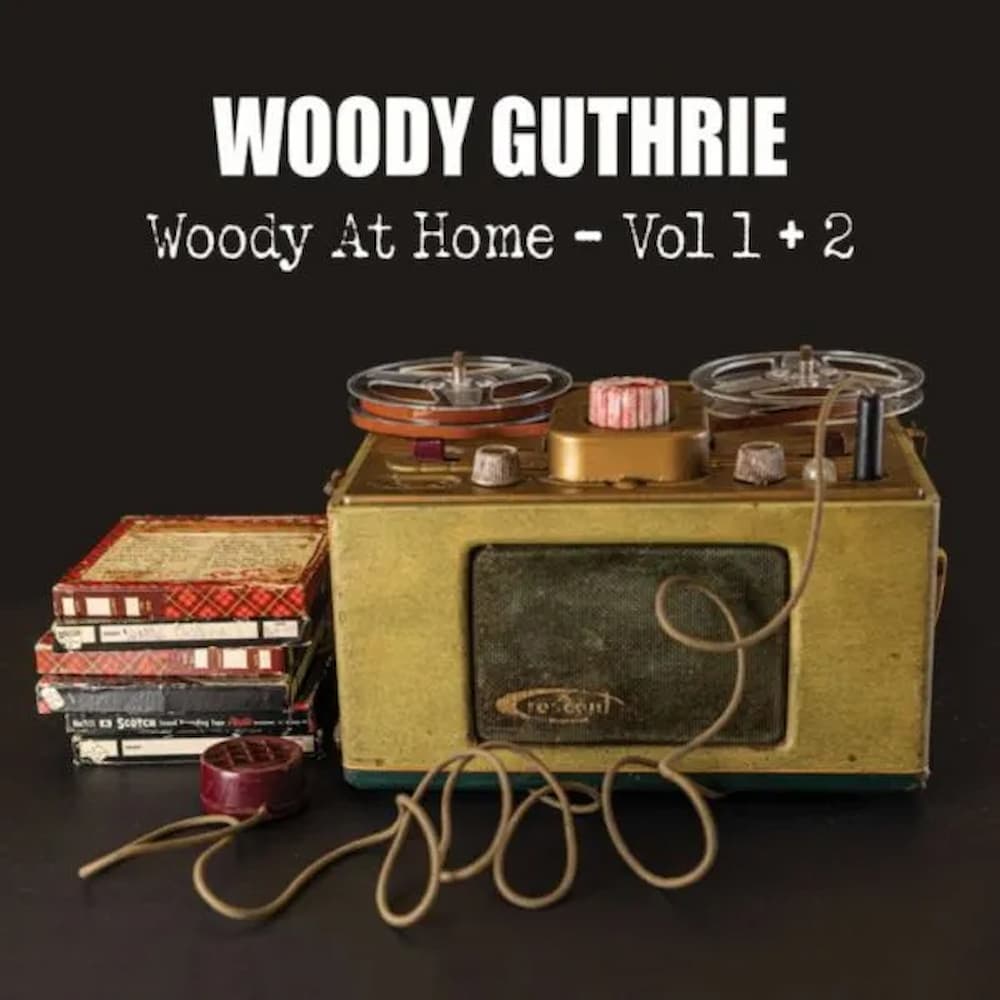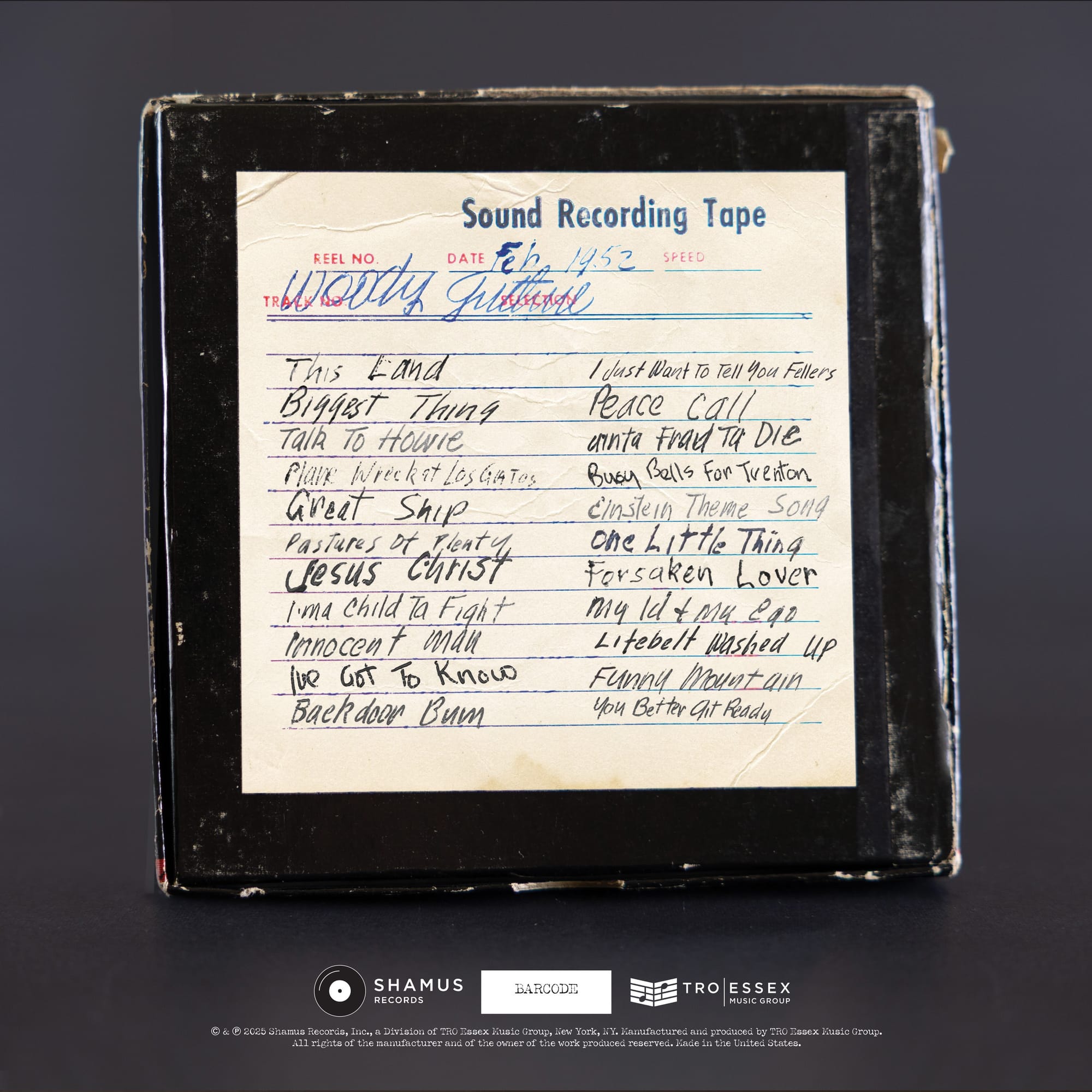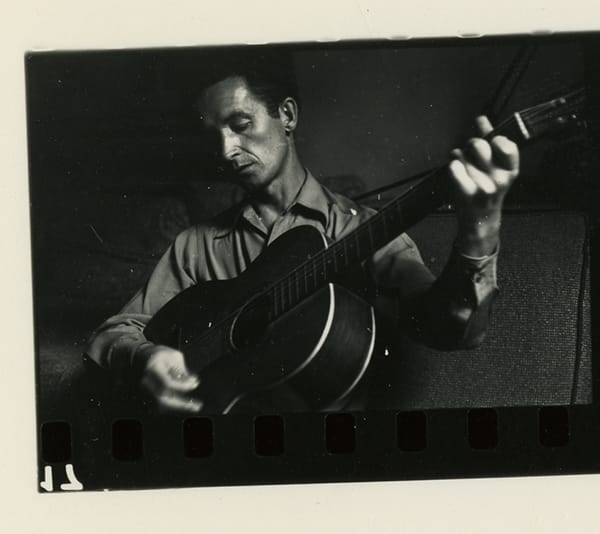Woody Guthrie was named after progressive president Woodrow Wilson, who advanced policies on government regulation and social welfare. He was also born on Bastille Day, a turning point of the French Revolution that ended the monarchy. These were two auspicious signs for a folksinger who made a life of fighting for justice and speaking truth to power.
Woody’s songs are still sung regularly 58 years after his death at 55 from complications from Huntington’s Disease. The mere mention of his name in song invokes a sense of morality, justice, and the common good, which musicians beyond the folk world and across the genres channel regularly. A young Joe Strummer even called himself Woody when he was a gravedigger in Wales. “I think The Clash, in writing slogans on their clothing and on their guitars were in many ways taken from Woody's “This Machine Kills Fascists” [the words famously written on his guitar],” English folk-rocker and activist Billy Bragg says over a Zoom call.
“You might argue that Woody was the first person to write both topical songs and a regular newspaper column” says musician, historian, and author Elijah Wald via email. “[He combined] the traditional ‘folk’ or working class community news process with the new media of the literate and radio-listening working class, a sort of left-wing Will Rogers [American actor & satirist] with a guitar.”
Woody wrote an astonishing amount in less than 20 years: “There are over 40,000 individual pages of creative works, 3,000 lyrics, almost 400 pieces of artwork that just reside in the Woody Guthrie archive at the Woody Guthrie Center in Tulsa, Oklahoma,” says Anna Canoni, Woody’s granddaughter and President of Woody Guthrie Publications. “The Smithsonian [also] has the Ralph Rinzler collection, as Woody worked so closely with Moses Asch and sent letters, correspondence, lyrics, artwork.”
As Nora Guthrie, Woody’s daughter and former president of Woody Guthrie Publications says, “He would document everything [and where and when he wrote it]. …He comes out of the troubadour tradition. His songs are about things that he sees happening. ‘All you can write is what you see.’ That what his motto was. It was very important to him.”
Canoni, Guthrie, and Steve Rosenthal, producer and audio restorer for Woody’s last six releases are sitting around a table at TRO Essex Music Group in in Manhattan. The group which comprises of Woody’s longtime publisher is an independent family business now into its third generation, similar to Woody Guthrie Publications. Woody’s reel-to-reel tape machine sits on the table in between everyone, along with a stack of reels containing his long-rumored private home recordings.The team managed to parse through 100 complete songs from 35 reel-to-reel tapes of Woody’s final recordings, made in an 18-month period between January 1951 to the middle of 1952, upon the onset of his Huntington’s disease. The 22-song collection called Woody At Home - Volumes 1 & 2 comes out today, August 14, via Shamus Records (a subsidiary label of TRO Essex) and includes 13 songs only known as written lyrics.




![SPOTLIGHT: The History of the ‘Two of Hearts’ [ESSAY]](/content/images/size/w720/2025/11/Spotlight-Sabine-McCalla-4.png)

